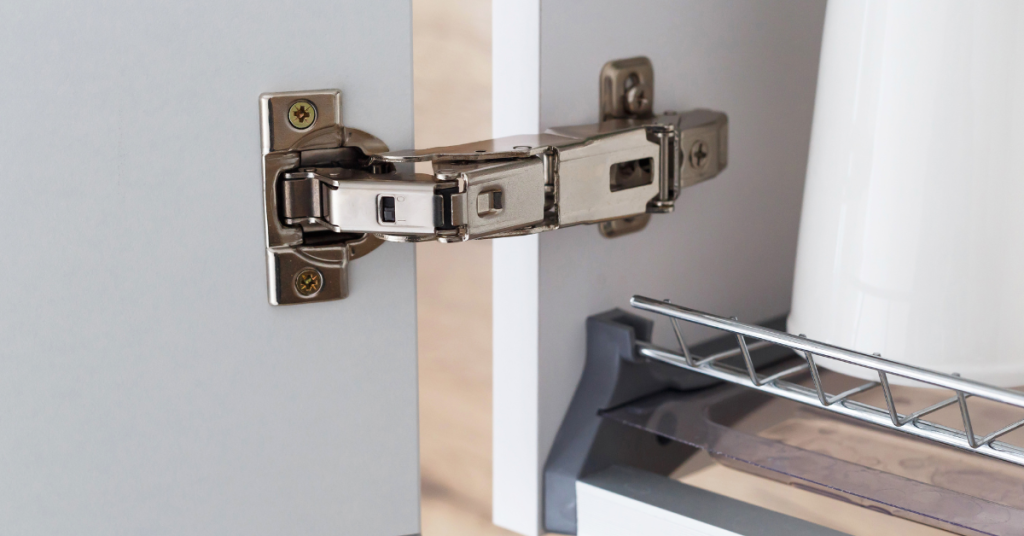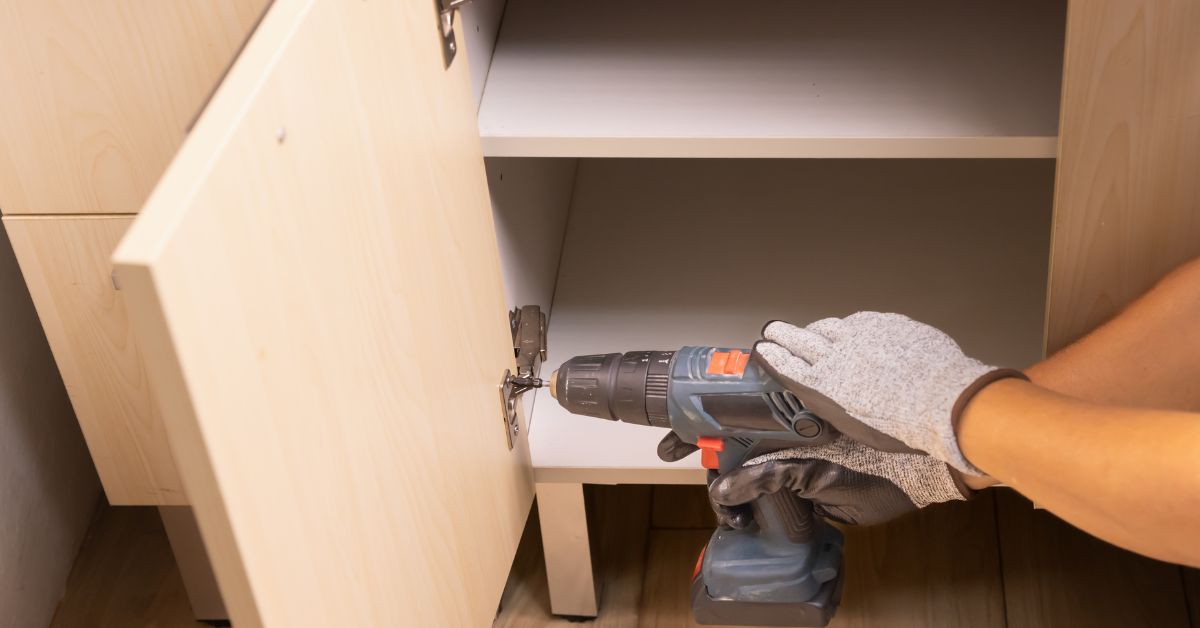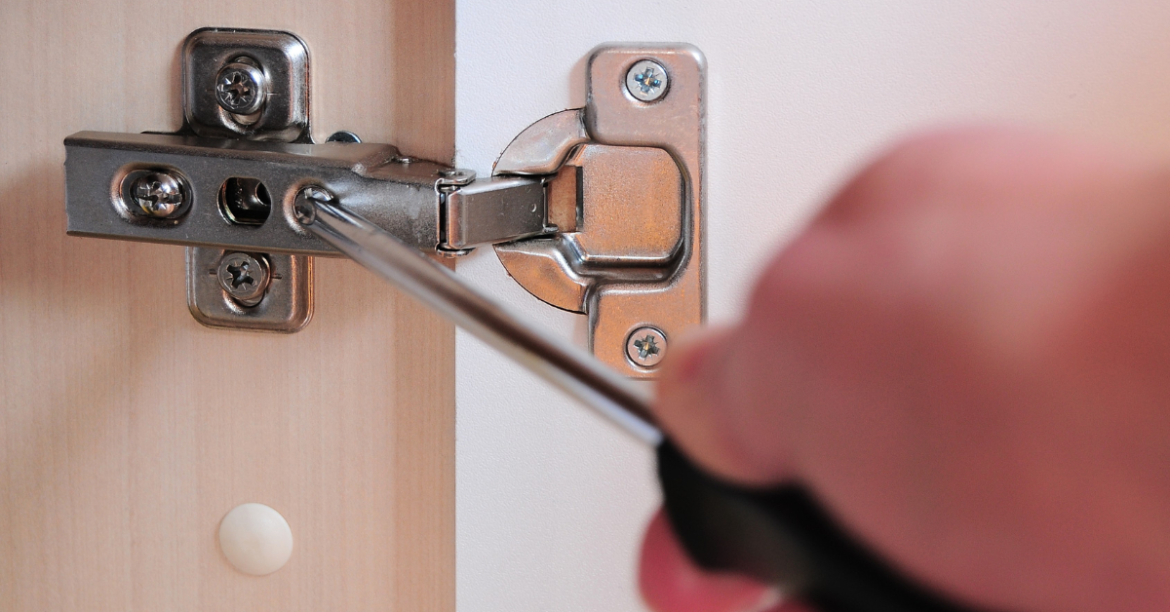Table of Contents
Cabinet hinges play a vital role in cabinetry’s functionality and aesthetics. Among the various hinge types, inset cabinet door hinges are noteworthy for their seamless appearance and sturdy design. Choosing the right hinge is essential for ensuring that your cabinets not only operate smoothly but also complement the overall style of your space.
This comprehensive guide explores inset cabinet door hinges in detail, delves into their unique features, and examines other types of cabinet hinges available on the market. Whether you’re updating your kitchen, bathroom, or custom-built furniture, understanding hinge options will empower you to make the best choices for durability, ease of installation, and visual appeal.
Understanding Inset Cabinet Door Hinges
Inset cabinet door hinges are designed to blend form and function. It offers a sleek and flush appearance that complements both modern and traditional cabinetry styles. Unlike overlay doors that cover the cabinet edges, inset doors align perfectly with the cabinet frame, creating a seamless and polished look.
Benefits of Inset Hinges
- Aesthetic Appeal: Inset hinges provide a sophisticated and streamlined appearance, making them ideal for contemporary and classic designs alike.
- Durability: Built for long-term use, these hinges maintain alignment and function even with frequent operation.
- Versatility: Inset hinges work well with both frameless and face-frame cabinets, adapting to various design preferences.
How Inset Hinges Work
Inset hinges are installed inside the cabinet frame, allowing the door to sit flush. Some models include soft-close or self-closing mechanisms for enhanced functionality and ease of use.

Inset Cabinet Door Hinges
Types of Cabinet Hinges
Cabinet hinges come in a wide range of styles and functionalities, each suited to different design needs and door types, making it essential to understand your options.
1. Butt Hinges
- Best For: Traditional cabinets with inset doors.
- Features: Two-piece design; often requires a mortise for a flush fit.
- Advantages: Durable and reliable, ideal for heavy doors and classic designs.
2. Concealed Hinges (European Hinges)
- Best For: Frameless cabinets or modern designs.
- Features: Hidden from view when the door is closed, contributing to a minimalist aesthetic.
- Advantages: Adjustable, sleek, and compatible with soft-close mechanisms.
3. Surface Mount Hinges
- Best For: Visible accent hinges in traditional cabinetry.
- Features: Installed on the exterior of the door and frame for decorative appeal.
- Advantages: Easy to install and available in various decorative styles.
4. Partial Overlay Hinges
- Best For: Partial overlay cabinet doors.
- Features: Allows part of the cabinet frame to remain visible.
- Advantages: Blends traditional and modern aesthetics seamlessly.
5. Full Overlay Hinges
- Best For: Frameless cabinets with full overlay doors.
- Features: Covers the entire cabinet frame, creating a sleek look.
- Advantages: Ideal for clean, contemporary designs.
6. Wrap-Around Hinges
- Best For: Heavy-duty support for inset or overlay doors.
- Features: Wraps around the frame for extra strength.
- Advantages: Reliable for large or heavy doors.
7. Specialty Hinges (Soft-Close, Pivot, 3D Adjustable)
- Best For: High-performance and customizable applications.
- Features: Include advanced functions like soft-close or adjustable alignments.
- Advantages: Premium quality and enhanced functionality.

Inset Cabinet Door Hinges
Choosing the Right Hinge for Your Cabinet Design
Selecting the perfect cabinet hinge involves considering factors such as cabinet type, door overlay, visibility, and additional motion features for optimal results.
1. Cabinet Type
- Framed Cabinets: Hinges attach to the face frame and are often used with inset doors for a classic look.
- Frameless Cabinets: Hinges mount directly to the cabinet box, suitable for modern designs.
2. Door Style
- Inset: Requires hinges that align flush with the cabinet frame for a cohesive appearance.
- Partial Overlay: Covers part of the cabinet frame, offering a balanced aesthetic.
- Full Overlay: Completely covers the cabinet frame, creating a seamless look.
3. Visibility Preferences
- Concealed Hinges: Perfect for minimalist designs where hardware is hidden.
- Exposed Hinges: Adds decorative elements, ideal for vintage or traditional aesthetics.
4. Motion Features
- Soft-Close Hinges: Prevent slamming and reduce noise, ideal for high-traffic areas like kitchens and bathrooms.
- Self-Closing Hinges: Automatically pull the door closed, offering convenience and functionality.
- Standard Hinges: Simple and functional, often used in budget-friendly projects.
Installing Inset Cabinet Door Hinges
Proper installation of inset cabinet door hinges ensures that your doors align seamlessly with the cabinet frame, providing both aesthetic appeal and functionality.
Preparation
- Gather tools such as a drill, screws, screwdriver, and a hinge template for accurate placement.
- Measure door dimensions and mark hinge positions carefully.
Step-by-Step Guide
- Mark Hinge Placement: Use a template or precise measurements to ensure symmetry.
- Drill Holes: Create pilot holes for screws to avoid splitting the wood.
- Attach Hinges to the Door: Secure the hinge to the back edge of the door.
- Mount Hinges to the Cabinet: Align and attach hinges to the cabinet frame with screws.
- Adjust and Test: Fine-tune hinge settings to ensure smooth operation and a flush fit.
Common Mistakes to Avoid
- Misaligned doors or improperly placed hinges.
- Over-tightening screws, which can damage the frame or door.
- Failing to test the alignment before securing all screws.

Inset Cabinet Door Hinges
Maintaining and Troubleshooting Cabinet Hinges
Regular maintenance and quick troubleshooting of cabinet hinges can prolong their life and keep your cabinets functioning smoothly over time.
Maintenance Tips
- Clean hinges regularly to remove dust and debris.
- Lubricate moving parts with silicone spray or light oil to prevent squeaks.
Troubleshooting Issues
- Loose Hinges: Tighten screws or replace worn hardware.
- Misaligned Doors: Adjust hinge screws to correct alignment and eliminate gaps.
- Squeaky Hinges: Apply lubricant to reduce noise and enhance performance.
Inset Hinges vs. Other Cabinet Hinges
Comparing inset hinges to other cabinet hinge types highlights their unique advantages, including their ability to create a streamlined, integrated look.
Advantages of Inset Hinges
- Provide a sleek, flush appearance that enhances the overall design.
- Compatible with both traditional and modern cabinetry styles.
Comparison with Overlay Hinges
- Inset hinges align doors with the cabinet frame, creating a cohesive and elegant aesthetic.
- Overlay hinges sit on top of the frame, making them better suited for frameless and contemporary designs.
Conclusion
Inset cabinet door hinges are an excellent choice for creating a seamless and elegant cabinet design. By understanding the types of cabinet hinges available and considering your specific needs, you can select the perfect hinge for your project. Whether you prioritize functionality, aesthetics, or advanced features, the right hinge can transform your cabinetry.
Ready to upgrade your cabinets? Explore the various hinge options and find the perfect fit for your design today!
